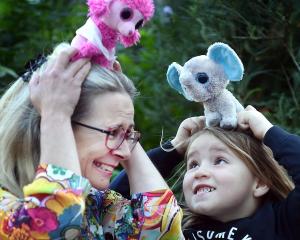The scientists, Prof Ian Morison and Research Fellow Dr Erin Macaulay have been making use of highly powerful mass DNA sequencing equipment at Otago University, and are focusing on pre-eclampsia.
This is a disorder of pregnancy, involving high blood pressure, and, often, large amounts of protein in the urine.
This continued to be ''one of the most baffling of diseases'' in pregnancy, and still caused the deaths of both mothers and babies each year.
One key response was to deliver the baby early.
At least 1000 to 1500 births each year in New Zealand were affected by pre-eclampsia and about 20% of neonatal intensive care unit cots involved such babies.
That reality was reflected in the British television series Downton Abbey, when Lady Sibyl died from pre-eclampsia after childbirth.
The Otago scientists have been playing a leading international role in the newest frontier in biological science, epigenetics and natural modification of DNA by a group of chemicals called methyls.
''We want to help people by improving their pre-eclampsia outcomes,'' Dr Macaulay said.
Outcomes for mothers and babies in developing countries had significantly improved, but the condition's cause remained ''a big question mark. We don't know what's causing it'', she said.
Prof Morison, who is leading the research, said every cell in the body had the same genetic material, gleaned from the mother and father.
Accordingly, every cell was ''virtually genetically identical'' in any person.
But blood cells, for example, were different from skin cells, and performed ''vastly different functions''.
The process that was ''turning on and off genes in each cell'' to make them undertake specific functions was called ''epigenetics''.
Some of this switching off had resulted from methyl chemicals in the cells, which were telling a gene to ''stop'' undertaking an activity.
The placenta was one of the most amazing organs in a mammal, carrying nutrients and oxygen to the baby and removing waste, Prof Morison said.
Otago-led research had shown that in the body's ordinary tissues, about 80% of modifiable sites were ''methylated''- or could be switched off.
But the percentage of methylated sites in the placenta was only 50%, which might be ''very significant''.
''Abnormal methylation'' in the placenta could be ''part of what's causing pre-eclampsia'', he said
The researchers were also working hard to find potential biomarkers, using placental material found in the mother's blood.
This approach could result in pre-eclampsia being identified much earlier in pregnancy, he said.
The pair are being funded by Gravida, the National Centre for Growth and Development, in Auckland.












